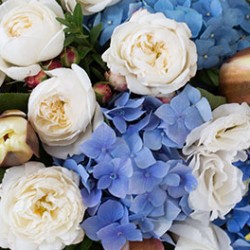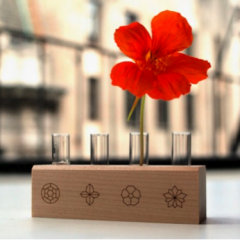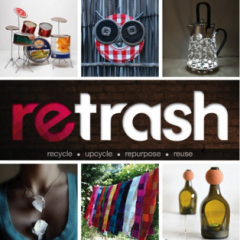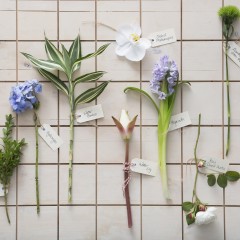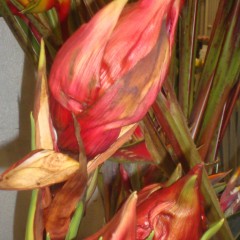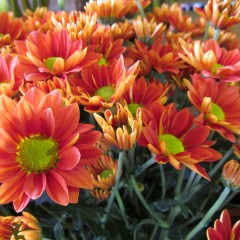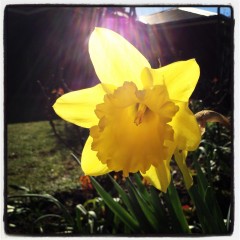Blog
September 2013
Wonderful Waratahs
Wonderful, spectacular, unique Waratahs are now in flower and putting it out there for your enjoyment in the bush, gardens and through suppliers of cut flowers. Waratahs belong to the Telopea genus of the Proteaceae family, so they’re related to Banksias, Leucospermums and Leucadendrons. There are only four species of Waratah. They originally comeRead more
Stressed out? Build in some flowers….
We know it might appear that some of us here at Bloom College HQ have little to do but trawl cyberspace for weird, wonderful and inspiring facts and features about flowers, design, innovation and all things related to sustainability, but it’s not true. We also have to eat, drink, be merry, create pieces ofRead more
Ikebana: what’s old is new
Over the past few years many of our favourite florists and floral artists have been incorporating more found objects, repurposed and reused items and varieties of natural objects into their designs. Whether their primary motivation is due to a commitment to sustainability or good design (or both), we could argue that Ikebana (long distinguishedRead more
Edible flowers for kids
Inhabitat.com is a weblog which focusses on innovation for sustainability in architecture and home design. Inhabitots.com is its baby and parenting supplement website, set up by Inhabitat.com co-founder Jill Fehrenbacher. It’s a resource for parents, care givers and others interested in sustainable, healthy modern design for children. Check out this recent blog: Grow HeirloomRead more
Retrash
Retrash is a soft cover book, which showcases the work of over 80 artists who are reusing waste in creative and innovative ways. The 3-year collaborative project is complete but the creators need to raise funds for printing and distributing it. They’re launching Retrash on kickstarter.com in November 2013. You can help spread word byRead more
To preserve or not to preserve
At Bloom College flower school we’re all about helping people have fun whilst learning about the art and craft of flower arranging. Design and technique, though, are of little use if the beautiful flowers you’re arranging wilt and die before your very eyes. Professional florists often sell or give customers a little sachet ofRead more
The many faces of Chrysanthemum continued…
Chrysanthemums and Mothers’ Day Last week’s blog on ‘The many faces of chrysanthemum’ seems to have been chopped off before we got down to answering why chrysanthemums are associated with Mothers’ Day in Australia. The period around Mothers’ Day is one of the year’s busiest for Australian florists who sell enormous quantities of gift-wrapped cutRead more
In season: Gymea lilies, magnolias and buttercups
Gymea lily or Spear lily (Doryanthes excelsa) is in season now. With red flowers up to 50cm in diameter, stems that can be over 5m tall and well-formed spear-like leaves around 1m long, the Gymea lily is perhaps the grandest of all flowers we get to use in floral arrangements in Australia. The GymeaRead more
The many faces of chrysanthemum
With Fathers’ Day on our minds, we found ourselves thinking of Mothers’ Day and chrysanthemums. Chrysanthemums could be said to be a more interesting thing to think about than socks, drills or golf balls. Native to Asia and north-eastern Europe – with most deriving from China – chrysanthemums are now grown all over the world.Read more
Do daffodils kill other flowers?
Do daffodils kill other flowers? A most robust discussion is taking place amongst us all here at Bloom College HQ. The topic is whether daffodils and jonquils should be allowed to inhabit the same bucket of water as freesias, tulips or other spring flowers when all are freshly picked. We know the toxic sap fromRead more

